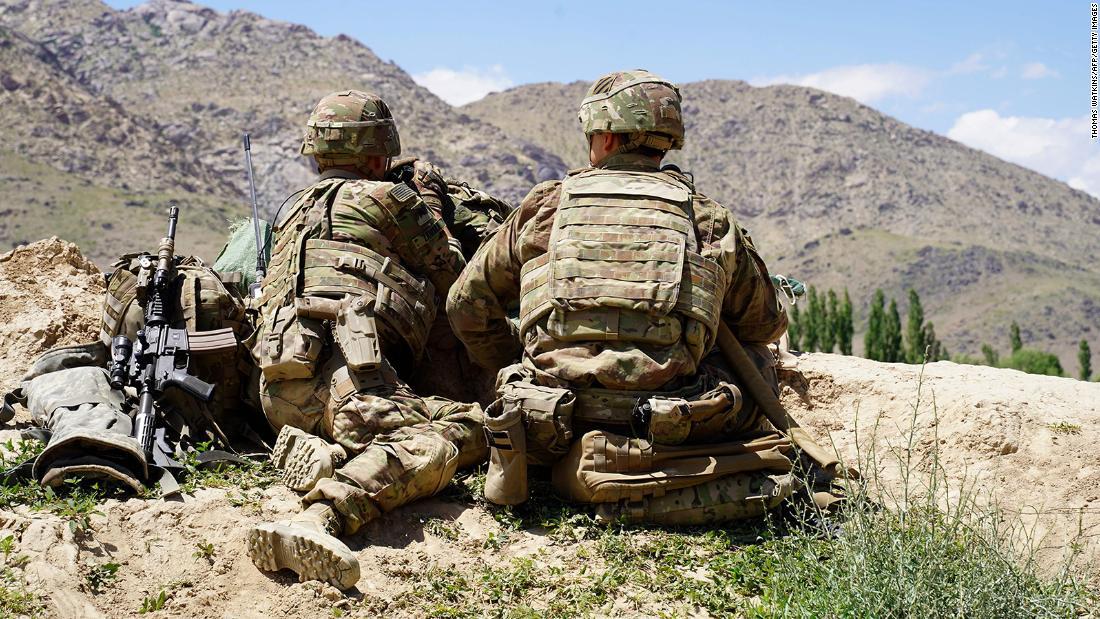The United States’ military withdrawal from Afghanistan is already underway and the equipment is in the process of being packed and shipped, three defense officials told Citizen Free Press.
The Pentagon also approved the deployment of hundreds of land, air and sea forces to the region to ensure the safety of US and NATO forces and contractors as they withdraw, the officials added.
Defense Secretary Lloyd Austin approved extending the mission of the aircraft carrier USS Eisenhower to “remain in the Central Command area of responsibility for a period,” Pentagon spokesman John Kirby said Friday. According to Kirby, the secretary also authorized “the addition of some long-range bombers” to the region, in preparation for the withdrawal of US troops from Afghanistan.
Two B-52 bombers have already arrived in the region, Kirby noted.
The immediate goal is to advance the shipment of unnecessary equipment and supplies that will not be destroyed on site or transferred to Afghan forces, one of the officials told Citizen Free Press. The “obsolete” equipment will be destroyed, the official added.
The transfer of personnel out of Afghanistan will begin “in a few weeks,” the official said. And he added that the US “will maintain our ability to defend the force and provide support” to the units in Afghanistan.
Afghanistan Army Withdrawal
President Joe Biden formally announced his decision to end America’s longest war last week. In that sense, he argued that the conflict, which has lasted for decades, no longer fits the priorities of the United States. Those calling for an immediate withdrawal, including some members of Biden’s team, fear that the transfer of US troops from Afghanistan could lead to the collapse of the Kabul government and the return to power of the Taliban.
The deadline set by Biden to withdraw the troops is final, with no possibility of extension in case conditions on the ground worsen.
To ensure security when the troop withdrawal begins, the US Central Command, which oversees Afghanistan, received approval from the Pentagon to maintain an aircraft carrier in the region. So that the fighter jets are as close as possible if air strikes need to be carried out to protect the retreating troops.
This likely means the USS Dwight D. Eisenhower, the aircraft carrier already in the region, being held in place and its return home delayed, officials explained.
Several hundred ground troops will also be dispatched to Afghanistan to provide “force protection” for units leaving the nation. As per Department of Defense approval, no more than 1,000 ground forces will be dispatched.
Concern about retirement
There is a particular concern for the safety of the troops when they leave the more remote locations around Kandahar, Jalalabad and some special operations forces locations in eastern Afghanistan.
Currently, there are 2,500 US regular forces in Afghanistan. Plus hundreds of additional special operations forces that are not publicly recognized.
Officials are aware that sending more troops, even temporary, leaves a larger footprint that must be dismantled.
In addition, the bombing planes are expected to be located in the region as a deterrent to Taliban violence. In that sense, be prepared if an airstrike is needed. The military also plans to maintain combat air patrols over Afghanistan during the withdrawal, with the aim of maintaining security.
Several defense officials say that, informally, attempts will be made to carry out as much of the pullout as possible before the Sept. 11 deadline set by Biden.
General Frank McKenzie, commander of the US Central Command, told Congress on Thursday that the US intends to maintain military influence and the ability to conduct airstrikes in Afghanistan once troops withdraw from the country this year. . As stated before the Senate Armed Services Commission, the main drones used in that country can reach the territory from the bases of the US allies in the Gulf.
There is no significant US military presence in the countries surrounding Afghanistan that would allow the country to base its forces there, so McKenzie said US diplomats seek the “art of the possible” to check if there are possible agreements in this regard with other nations.

